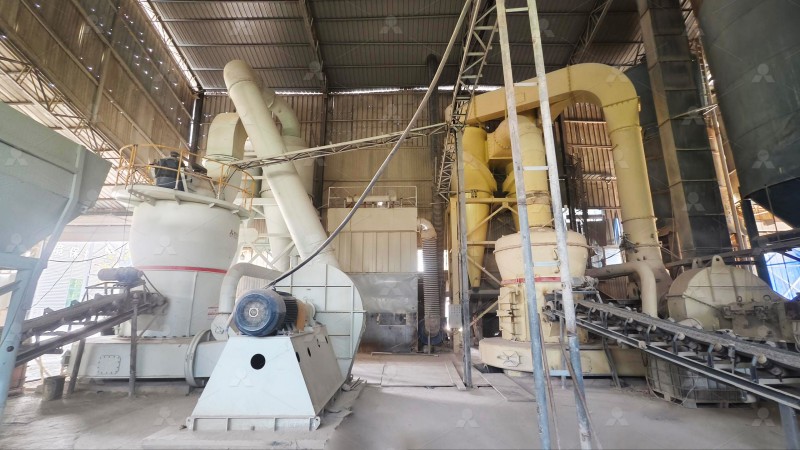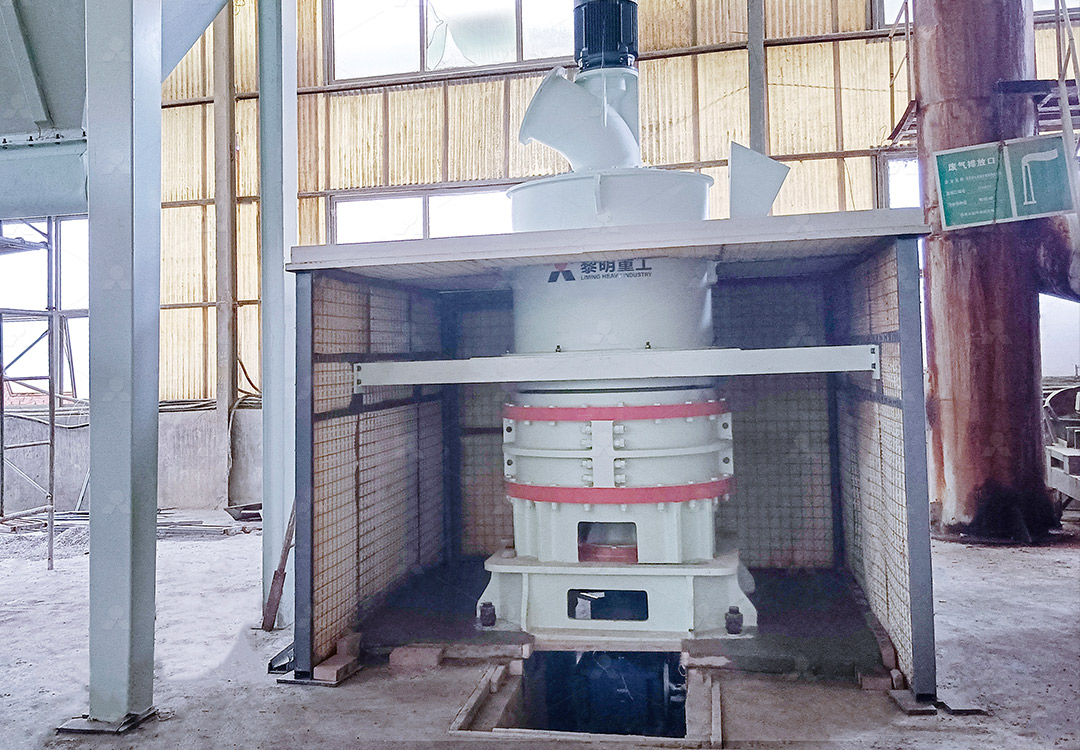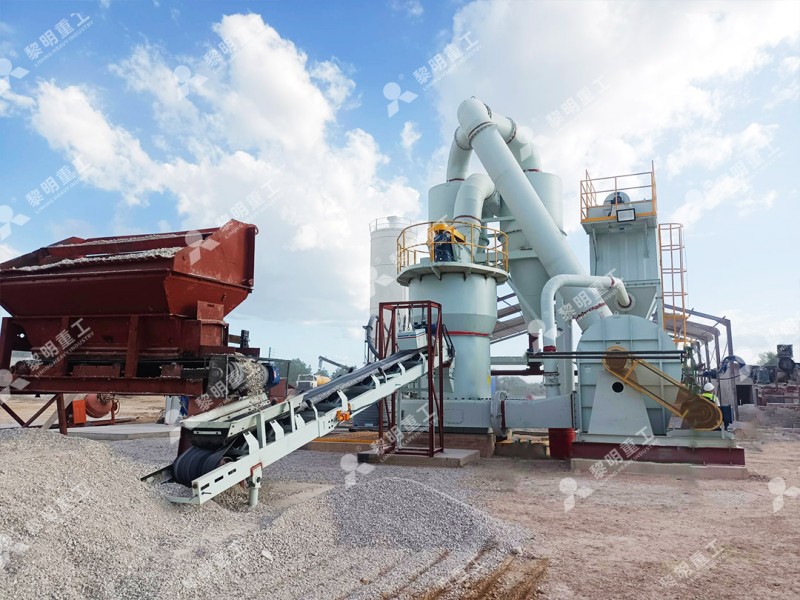High-Efficiency Wind-Eroded Rock Grinding Equipment for Mineral Processing
High-Efficiency Wind-Eroded Rock Grinding Equipment for Mineral Processing
In mineral processing operations dealing with wind-eroded rock formations, conventional grinding equipment often proves inadequate. These weathered materials present unique challenges—irregular particle distribution, variable hardness, and high abrasiveness—that demand specialized milling solutions. The quest for optimal particle size reduction while maintaining operational efficiency has driven significant technological advancements in grinding mill design.

The Challenge of Weathered Mineral Compositions
Wind-eroded rocks typically exhibit heterogeneous structures with varying degrees of hardness within the same material batch. This inconsistency creates substantial difficulties for standard grinding systems, leading to uneven wear patterns, reduced throughput, and inconsistent final product quality. Operations processing materials like limestone, dolomite, barite, and marble—common in weathered formations—require equipment capable of adapting to these fluctuations while maintaining precise particle size control.
Traditional ball mills often struggle with these materials, exhibiting excessive energy consumption and inadequate fineness control. The solution lies in advanced grinding technology that incorporates intelligent material handling, precision classification, and robust construction specifically engineered for challenging mineral compositions.
Advanced Grinding Solutions for Demanding Applications
Modern grinding philosophy emphasizes not merely particle size reduction but comprehensive system optimization. This includes integrated drying capabilities, precise classification, dust management, and energy efficiency—all critical factors when processing wind-eroded minerals that may contain residual moisture or produce problematic dust levels.

For operations requiring ultra-fine powder production from wind-eroded materials, the MW Ultrafine Grinding Mill represents a technological breakthrough. Engineered for customers needing to produce ultra-fine powder between 325-2500 meshes, this machine incorporates German cage-type powder selector technology that ensures exceptional separation precision. The MW series handles input sizes up to 20mm with capacities ranging from 0.5 to 25 tph, making it ideal for various production scales.
What sets this equipment apart in processing weathered minerals is its innovative grinding chamber design—completely free of rolling bearings and screws. This eliminates common failure points and concerns about bearing damage or loose fasteners causing operational disruptions. The external lubrication system enables maintenance without shutdowns, supporting continuous 24-hour production crucial for mineral processing operations.
Environmental and Operational Considerations
Processing wind-eroded rock often generates significant dust, creating environmental and workplace safety challenges. Modern grinding equipment addresses these concerns through integrated pulse dust collection systems and advanced noise reduction technologies. The MW Ultrafine Grinding Mill, for instance, incorporates an efficient pulse dust collector and muffler system that maintains operation well within environmental compliance standards.
Energy efficiency remains paramount, particularly given the variable hardness of weathered materials. Compared to conventional jet mills and ball mills, advanced grinding systems can reduce energy consumption by 30-50% while increasing production capacity by up to 40%. This efficiency stems from optimized grinding curves, precision engineering, and intelligent system design that minimizes energy waste.

Selecting Appropriate Equipment for Specific Applications
When processing wind-eroded rocks, material characteristics should dictate equipment selection. For operations requiring moderate fineness with high throughput, the LUM Ultrafine Vertical Grinding Mill offers exceptional capabilities. With input sizes up to 10mm and capacities from 5-18 tph, this mill incorporates the latest grinding roller technology and German powder separating technology. Its unique roller shell and lining plate grinding curve generates material layers more effectively, enabling high finished product rates through single-pass milling.
The LUM series particularly excels when processing calcite, marble, limestone, and dolomite—common components of wind-eroded formations. Its double position-limiting technology provides operational stability, preventing destructive impacts during material fluctuations, while the reversible structure simplifies maintenance of heavy grinding components.
Conclusion
The evolution of grinding technology has produced equipment specifically capable of handling the challenges presented by wind-eroded rock formations. Through advanced engineering, intelligent design, and comprehensive system integration, modern grinding mills deliver the precision, efficiency, and reliability required in today’s competitive mineral processing industry. Operations dealing with these challenging materials should prioritize equipment that offers not just grinding capability but complete system optimization for maximum productivity and minimal environmental impact.
Frequently Asked Questions
What makes wind-eroded rocks particularly challenging for grinding equipment?
Wind-eroded rocks typically exhibit inconsistent hardness and irregular particle distribution within the same material batch. This heterogeneity causes uneven wear on grinding components and can lead to inconsistent final product quality without proper equipment design.
How does the MW Ultrafine Grinding Mill handle the dust generated from processing weathered minerals?
The MW Ultrafine Grinding Mill incorporates an efficient pulse dust collector system that prevents dust pollution throughout the entire milling process. Combined with silencer technology and noise elimination rooms, the system operates fully compliant with national environmental protection standards.
What maintenance advantages does the bearing-free design offer?
The absence of rolling bearings and screws in the grinding chamber eliminates concerns about bearing damage or sealing part failures. With lubrication performed externally without shutdown requirements, the system supports continuous 24-hour operation with minimal maintenance interruptions.
How does the fineness adjustment work on modern grinding mills?
Advanced mills like the MW series feature cage-type powder selectors that allow precise fineness adjustment between 325-2500 meshes. Multi-head selectors can be configured according to specific production requirements for yield, fineness, and sieving rate, achieving d97≤5μm in a single pass.
What energy savings can be expected compared to traditional grinding systems?
Modern grinding equipment typically reduces energy consumption by 30-50% compared to conventional systems while increasing production capacity by up to 40%. These savings result from optimized grinding curves, efficient classification systems, and reduced mechanical resistance.
